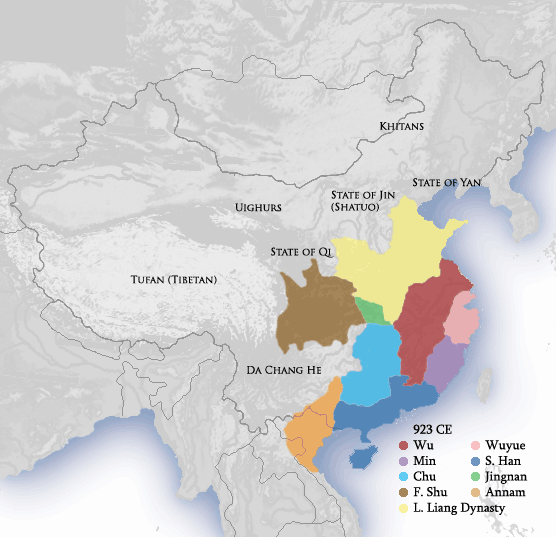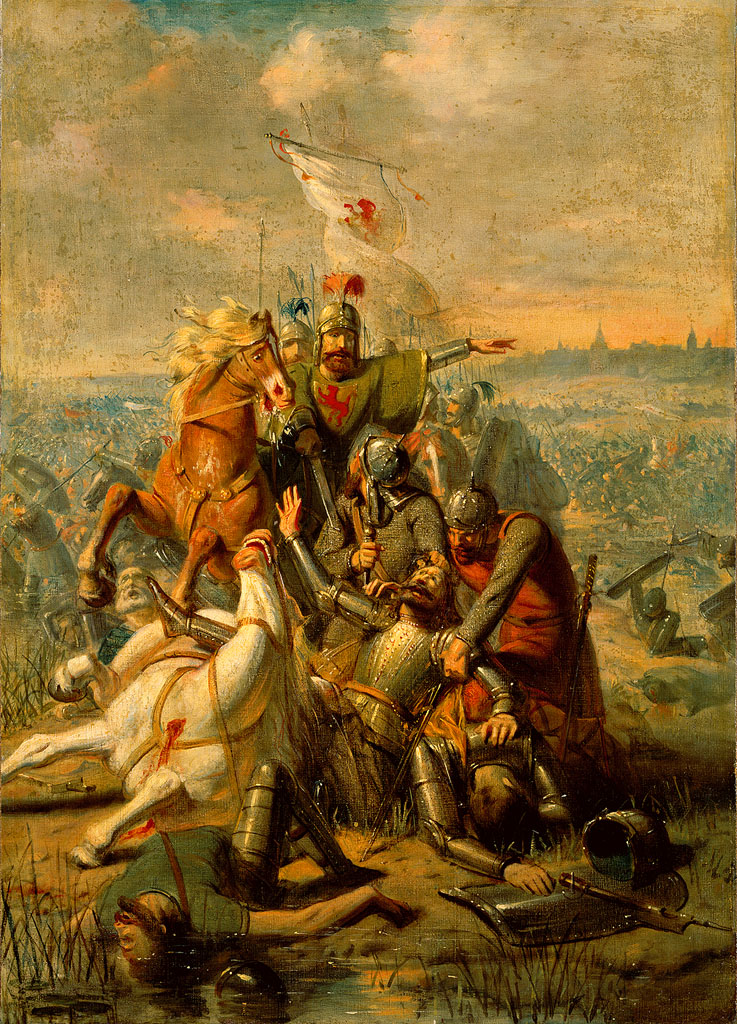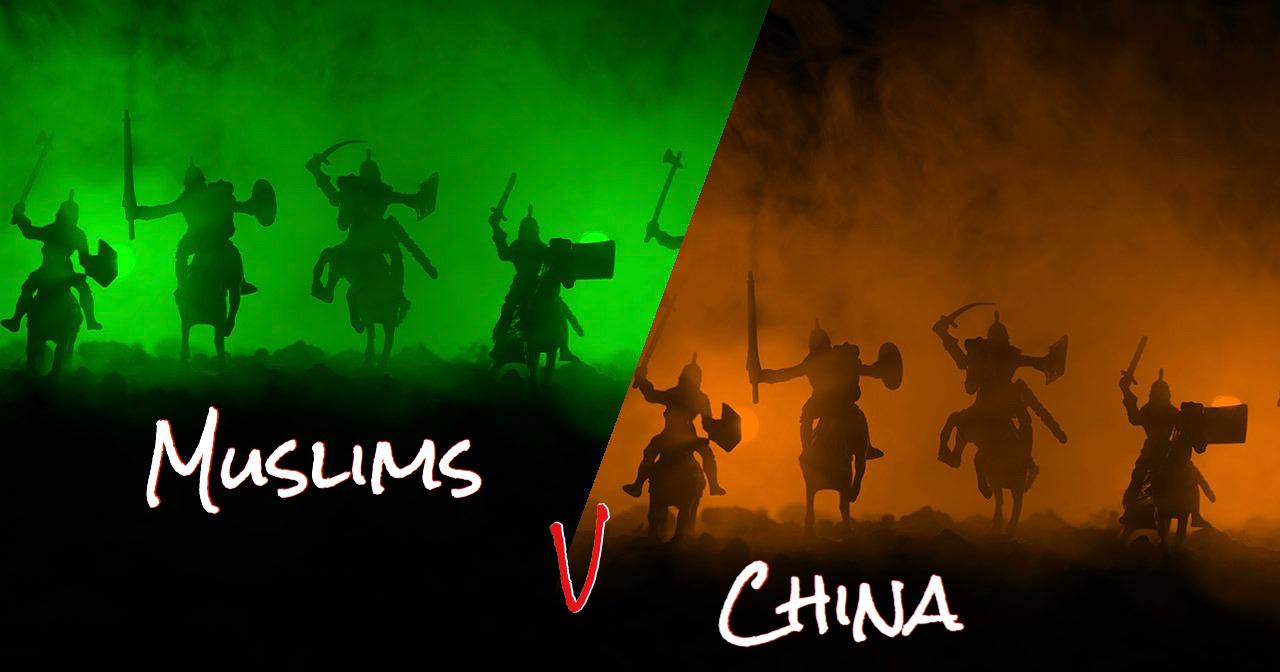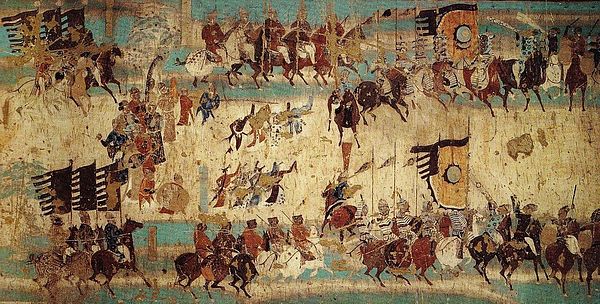Here is the battle between the Arabs and Chinese that changed the world forever and little does anyone knows that.

en.wikipedia.org
snip... the battle last for several days...
The Battle of Talas or Battle of Artlakh (Chinese: 怛羅斯戰役; pinyin: dáluósī zhànyì; Arabic: معركة نهر طلاس) was a military engagement between the Abbasid Caliphate along with its ally, the Tibetan Empire, against the Chinese Tang dynasty. In July 751 AD, Tang and Abbasid forces met in the valley of the Talas River to vie for control over the Syr Darya region of central Asia. After several days of stalemate, the Karluk Turks, originally allied to the Tang, defected to the Abbasids and tipped the balance of power, resulting in a Tang rout.
The defeat marked the end of the Tang westward expansion and resulted in Muslim control of Transoxiana for the next 400 years. Control of the region was economically beneficial for the Abbasids because it was on the Silk Road. Historians debate whether or not Chinese prisoners captured in the aftermath of the battle brought paper-making technology to the Middle East, where it eventually spread to Europe
Snip... Paper making technology was given to the west... the event that changed the world...
The Battle of Talas was a key event in the technological transmission of paper-making. After the battle of Talas, knowledgeable Chinese
prisoners of war were ordered to produce paper in
Samarkand, or so the story goes.
[47] In fact, high quality paper had been known—and made—in
Central Asia for centuries; a letter on paper survives from the fourth century to a merchant in Samarkand, but the
Islamic conquest of Central Asia in the late seventh and early eighth centuries opened up this knowledge for the first time to what became the Muslim world.
By the year 794 AD, paper manufacturing could be found in Baghdad, modern-day Iraq. The technology of paper making was thus transmitted to and revolutionized the Islamic world, and later the European West.
[48] The paper production was a state secret, and only some places and Buddhist Monks knew the technology. Of course, the paper was transported many kilometers as a Chinese luxury product, and as it was traded, the finding of paper in several places is not proof of production, but merely of use.
snip... the battle marked the beginning of the end of Buddhism in central Asia...
The Battle of Talas did not mark the end of Buddhism or Chinese influence in the region. The Buddhist Kara-Khitan Khanate defeated the Muslim Seljuq Turks and the Muslim Kara-Khanid Turks at the Battle of Qatwan in 1141, conquering a large part of Central Asia from the Muslim Karluk Kara-Khanid Khanate in the 12th century. The Kara-Khitans also reintroduced the Chinese system of Imperial government, since China was still held in respect and esteem in the region among even the Muslim population,[39][40] and the Kara-Khitans used Chinese as their main official language.[41] The Kara-Khitan rulers were called "the Chinese" by the Muslims.[4
Here is why China withdraw form central Asia... a rebellion back home...
In 751, a Muslim army and a Chinese army clashed on the banks of the Talas river.
thediplomat.com
snip...
Millward notes, however, that it was not Gao’s defeat at Talas that forced the Chinese to retreat from Central Asia. Instead, before Gao could return to his unfinished business with the Abbasids, the An Lushan rebellion shattered Tang control of the west. “
The An Lushan rebellion in the Tang homelands necessitated a pullback from Tang outposts in Xinjiang,” Millward writes. “Although the Tang dynasty survived the An Lushan rebellion, it would never extend power as far west as Xinjiang.” The battle of Talas, lacking any greater strategic importance, is nonetheless a key piece of Central Asia’s history and provides a crucial lesson that in matters of war and empire, timing is everything.
Here another take...
The little-known but pivotal Battle of Talas River in 751 A.D. pitted the expanding Arab Moslem army against the forces of the Tang Dynasty Chinese Empire.

www.thoughtco.com
snip...
Within the next 250 years, most of the formerly Buddhist, Hindu, Zoroastrian, and Nestorian Christian tribes of Central Asia had become Muslim.
S
oon, paper-making factories sprang up in Samarkand, Baghdad, Damascus, Cairo, Delhi...
and in 1120 the first European paper mill was established in Xativa, Spain (now called Valencia). From these Arab-dominated cities, the technology spread to Italy, Germany, and across Europe.
War History Online presents this Guest Article from Hikma History Pivotal or Overblown? Some battles are seen as landmark moments; their result

www.warhistoryonline.com

A good video of the battle and the led up and aftermath...















:max_bytes(150000):strip_icc()/Battle_of_Talas-38df334b1fc146cc8c72999c89bcf9f0.png)




